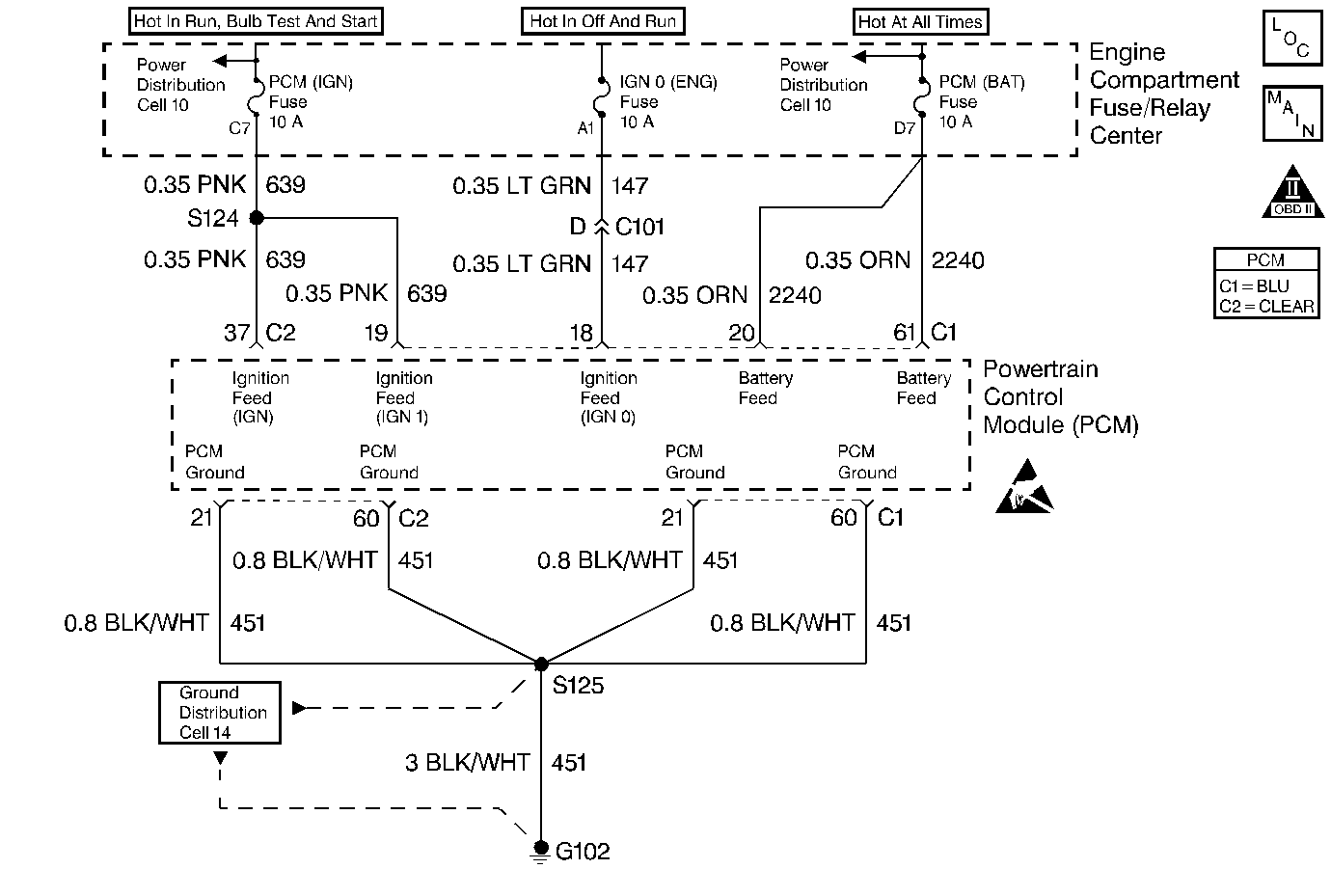For 1990-2009 cars only

Circuit Description
The PCM has two internal processors: the E and the T side. They are connected together and share data on an interconnect called the SPI. The E side sends sensor data to the T side. This sensor data is checked and if the difference in readings between the two processors is too great, DTC P0606 will set.
Conditions for Setting the DTC
Test Conditions
| • | Valid SPI data is being received. |
| • | Ignition voltage is greater than 10 volts. |
| • | Ignition on for 5 seconds. |
Failure Condition
MAP, ECT or TPS data varies between E side and T side.
Action Taken When the DTC Sets
| • | The PCM will illuminate the malfunction indicator lamp (MIL) when the diagnostic runs and fails. |
| • | The PCM will record operating conditions at the time the diagnostic fails. This information will be stored in the Freeze Frame and Failure Records. |
Conditions for Clearing the MIL/DTC
| • | The PCM will turn the MIL OFF after three consecutive drive trips that the diagnostic runs and does not fail. |
| • | A Last Test Failed (current) DTC will clear when the diagnostic runs and does not fail. |
| • | A History DTC will clear after forty consecutive warm-up cycles with no failures of any emission related diagnostic test. |
| • | Use a scan tool to clear DTCs. |
| • | Interrupting PCM battery voltage may or may not clear DTCs. This practice is not recommended. Refer to Clearing Diagnostic Trouble Codes in PCM Description and Operation. |
Test Description
Number(s) below refer to the step number(s) on the Diagnostic Table.
Step | Action | Value(s) | Yes | No |
|---|---|---|---|---|
1 | Was the Powertrain On-Board Diagnostic (OBD) System Check performed? | -- | Go to A Powertrain On Board Diagnostic (OBD) System Check | |
Replace the PCM. Refer to PCM Replacement/Programming . Is the repair complete? | -- | Go to Powertrain Control Module Diagnosis for Verify Repair | -- |
